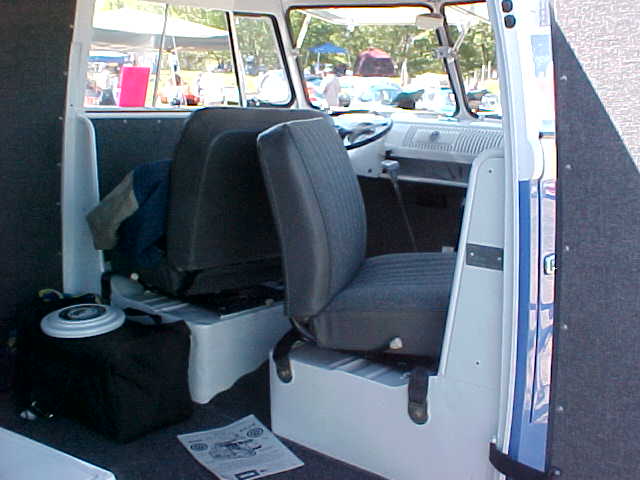Hello,
First post. I would like some input from knowledgeable vehicle body structural engineers around a debate that is raging in the Splitscreen van community (whilst most of the people involved have been working with the vehicles for 20+ years none in my opinion have your level of knowledge).
Setting aside that a split screen van built in the 50's has little safety anyway as you are basically sat inched away from a head on collision with no protection, we are debating the safety of a side impact at the b-post area behind the front wheel!
why?
Well VW produce several different type of vans and a member wishes to convert their bulkhead panel van to a swivel seat van by removing the bulkhead and wonders what, if any, additional strengthening should be added.
To start the debate these where the models produced by VW and the bulkhead/strengthening used.
1. Panel van, bulk head side to side from B-pillars, raised rolled floor side to side under seats.

2. Walkthrough, 2 tubs around the rear of the front seats, raised floor cut in the middle and lower section added to from a walk-through area.

3. Swivel seat, same as above with the tubs cut right back to just form triangular support at the b-post.

4. Flip-seat, same as above with the triangular upright supports removed.

Below is a bulkhead model with the bulkhead cut out

At the B-post area is a metal hoop running up the b-post, across the roof and under the floor is one of the main chassis section cross members.
So if the bulk head of a Panel was cut out you would be left with 4(a flip-seat) model, how much weaker is this and did the original bulkhead offer any protection from a side impact or is it just stopping goods in the back of the van flying forward and hitting the driver?
What additional support should/could be added to provide greater protection?
I realise we have no data for any real calcs, but what engineering principles come into play here that could be used to guide a decision?
First post. I would like some input from knowledgeable vehicle body structural engineers around a debate that is raging in the Splitscreen van community (whilst most of the people involved have been working with the vehicles for 20+ years none in my opinion have your level of knowledge).
Setting aside that a split screen van built in the 50's has little safety anyway as you are basically sat inched away from a head on collision with no protection, we are debating the safety of a side impact at the b-post area behind the front wheel!
why?
Well VW produce several different type of vans and a member wishes to convert their bulkhead panel van to a swivel seat van by removing the bulkhead and wonders what, if any, additional strengthening should be added.
To start the debate these where the models produced by VW and the bulkhead/strengthening used.
1. Panel van, bulk head side to side from B-pillars, raised rolled floor side to side under seats.

2. Walkthrough, 2 tubs around the rear of the front seats, raised floor cut in the middle and lower section added to from a walk-through area.

3. Swivel seat, same as above with the tubs cut right back to just form triangular support at the b-post.

4. Flip-seat, same as above with the triangular upright supports removed.

Below is a bulkhead model with the bulkhead cut out

At the B-post area is a metal hoop running up the b-post, across the roof and under the floor is one of the main chassis section cross members.
So if the bulk head of a Panel was cut out you would be left with 4(a flip-seat) model, how much weaker is this and did the original bulkhead offer any protection from a side impact or is it just stopping goods in the back of the van flying forward and hitting the driver?
What additional support should/could be added to provide greater protection?
I realise we have no data for any real calcs, but what engineering principles come into play here that could be used to guide a decision?
